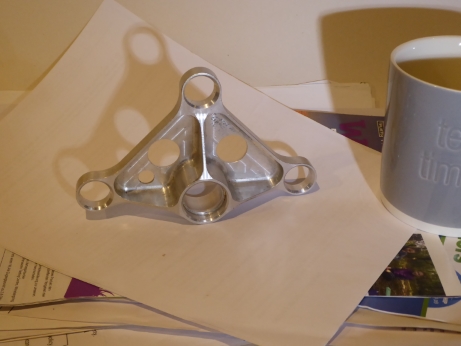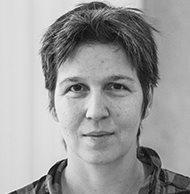Blog
Unless otherwise stated, content is shared under CC-BY-NC Licence
Building blocks of digital preservation in India
Dr. Dinesh Katre is Associate Director and Head of Department at the Centre for Development of Advanced Computing (C-DAC) in Pune, India
It is a matter of great pride for me to have associated myself with the global cause of preserving information in digital era. I wish to congratulate the team of Digital Preservation Coalition (DPC) for taking this initiative to celebrate International Digital Preservation Day (IDPD)! This can be a very effective tool for creating awareness about rampant digital obsolescence among general public.
We have been working on digital preservation in India since 2009. I take this opportunity to present an overview of “Centre of Excellence for Digital Preservation”, the flagship project undertaken as part the National Digital Preservation Programme sponsored by Ministry of Electronics and Information Technology, Government of India. The Centre of Excellence of Digital Preservation is established at C-DAC, Pune, INDIA. Being the Principal Investigator (PI) of this project, I would like to share information on major outcomes of this project.
Digital Preservation at the University of Melbourne
Jaye Weatherburn is Digital Preservation Officer at the University of Melbourne
Background
Three years ago, at the September 2014 meeting of Academic Board at the University of Melbourne, the Digital Preservation 2015–2025: Strategy[i] and Implementation Roadmaps[ii] were endorsed. By early 2016 the Digital Preservation Project team had formed and commenced the “Establishment phase” towards implementing the Strategy. A central aim of the Strategy is to establish a university ecosystem of repositories with the capability to archive, preserve and provide ongoing access to the university’s digital assets.
The project has survived and thrived through a large-scale university restructure, and significant resourcing challenges, thanks to the ongoing dedication of the library Research & Collections team at the university, led by Donna McRostie.
Digital Preservation of Indian Cultural Heritage: Issues and Challenges
Dr. Ramesh C Gaur works at the Jawaharlal Nehru University
At the outset, let me congratulate all on initiating 30th November as the International Digital Preservation Day (IDPD17).
My introduction to digital preservation started in 2005 when I visited Germany with the support of Max Mueller Bhawan. My three-week stay, one week each at Belfield University, Belfield; German National Library Frankfurt; and State Gottingen University Library, Gottingen; provided me opportunity to closely study some of the digital preservation initiatives in Germany in particular and in Europe in general. The interaction with researchers working at project like NESTOR, KOPOL, and REUSE, etc., helped me in learning the basics of digital preservation. After coming back from Germany, I shared my experience in the form of various lectures delivered at various national and international conferences in India. Since then, digital preservation is one of the prime area of my interest.
Digital preservation is a process of preserving both digitized and born-digital contents to a distant future in reusable condition for access by its users. It involves a set of systematic guidelines, processes, strategies, technology and approaches.' The technological obsolescence, shorter and uncertain life-period for current storage media, information glut, and internet revolution are some of the major factors which have made preservation of digital information more complex and challenging. Being a librarian, preservation for access is key to my thought process.
How do I keep my digital films safe
Joshua Ng is the Information Technology (IT) & Technical executive at the Asian Film Archive (AFA) based in Singapore.
Hi Joshua,
I made some short films a couple of years back. Some of them were submitted to competitions and won some awards. I have been keeping them in an external hard disk, thinking that since the files are backed up, it should be safe. But I had quite a scare the other day when my computer couldn't detect the hard disk. Fortunately when I tried it with another USB cable it worked. Is there something I can do to ensure my short films are safe?
Warm regards,
Paul Soon
Filmmaker
Plans are my reality
Yvonne Tunnat is Preservation Manager at the ZBW Leibniz Information Centre for Economics
I was fresh from university when I started my job as a preservation manager in October 2011 at the ZBW. Having taken a module named “Digital Preservation” during my studies of library and information science and after a 9-week-internship at the Digital Preservation Department of the university of Utah, I obviously was the best they could find for the job, although I knew next to nothing and they knew it.
Only, I did not know it. I felt self-confident and well-prepared. I had seen the OAIS slides several times, I knew our ingest was more or less solved and I did not need to think about access as we run a dark archive, so preservation planning was the one big task left on my desk.
There was this software, JHOVE, which miraculously was able to decide if a PDF was ok, flagging the bad ones for later preservation actions. As I knew nothing (like Jon Snow), I took all JHOVE findings as granted.
My preservation plan was as following:
- Gather all bad PDF
- Migrate them to good PDF
- Check if they still look alike
Thanks to JHOVE, the first step was easy. I left the second step to our IT guy, who quickly built a small java program, which transformed all the bad PDF into good ones. At least, after the migration JHOVE could not find anything wrong with them anymore.
But I had to rack my brain about the third step. Somehow I needed to compare the new PDF version with the original to see if there were any changes that would make the data producer angry (like layout changes, missing content etc).
What does digital preservation mean to you?
Jaye Weatherburn is Digital Preservation Officer at the University of Melbourne
In a review conducted in 2016 for the University of Melbourne’s Digital Preservation Project, key research staff at the university were asked the question, What does digital preservation mean to you? The primary aim of this review was to identify and document gaps in service provision for research data management, and to highlight the main barriers impeding the implementation of sustainable digital preservation.
The responses from the review have been anonymised, remixed slightly, and in parts edited for length, but still accurately represent the answers as provided. They are presented here in both transcript form, and as an audiovisual creation using the Mac OS X El Capitan (version 10.11.6) speech-to-text voices: Fiona, Alex, Karen, Samantha, Tessa, and Daniel.
Twittering on the edge of two conferences: Themes of power and empowerment at ASA-ITIC and iPRES 2017
Rachel Tropea is a Senior Research Archivist at the University of Melbourne in Australia.
2017 has been a year for digital preservation firsts – the first ever International Digital Preservation Day on 30 November 2017, the University of Melbourne became the first Australian institution to join the Digital Preservation Coalition, and on a personal level it was my first time attending iPRES.
iPRES is the major international conference on the preservation and long-term management of digital materials. In 2017 it was hosted by Kyoto University, and the theme was Keeping Cultural Diversity for the Future in the Digital Space — From Pop Culture to Scholarly Information.
At the same time, the Australian Society of Archivists Conference & Information Technologies Indigenous Symposium (ASA-ITIC) took place in Melbourne, and its theme was Diverse Worlds.
Although these communities confer separately, their concerns are largely the same as evidenced in part by their shared theme of diversity this year. And, as I hope you’ll see from my discussion of ASA-ITIC, the challenges posed by the keynote speaker Jarrett Drake go to the very core of what we all do.
What’s in a name?
Amber Cushing is Lecturer (Assistant Professor) for the School of Information & Communication Studies, University College Dublin
When it comes to digital curation in Ireland, a lot, actually. In 2014, I was recruited by University College Dublin (UCD) to start an Msc in Digital Curation. Digital curation has been concisely defined as “the management and preservation of digital material to ensure accessibility over the long term” (Abbott, 2008). In essence, preservation is only part of the process, digital curation prescribes that sustaining long term access to digital material should be considered before the object is even created, but selecting optimal file formats, a preservation strategy, etc. I thought my background, having been a PhD student at the UNC School of Information and Library Science, that launched one of the first degrees in digital curation had prepared me for this. I knew the major issues in the field, as well as the key literature. Just to be sure, I, along with UCD School of Information and Communications Head of School Professor Kalpana Shankar, decided to embark on a needs analysis of digital curation in Ireland.
This is not a part
Sean Barker runs a Technical consultancy on Enterprise Integration and Information Sharing for Products

This photo shows my paperweight for the last 25 years. The suggestion is that it was a test part, used in a prototype for a flight control mechanism. You might think that it is the physical part that endures long after the design has been lost in an archive, but this piece of metal demonstrates the opposite - it is a part without provenance, so not an aircraft part at all.
Yes, we could measure and redraw it, but that would not be its design. The holes are set where they are because of the geometry of the mechanism, but which mechanism was it designed for? The flanges - the metal ridges round the edges that stand up from the base plate - are there to stiffen the plate. They will have been analysed through a finite element stress model, but without knowing the original mechanism, we don't know the forces the stress model tested. And even if we can find the most likely mechanism, it is likely that it went through several versions, and which version, which loads is this designed for?
Crossroads
Andrea Goethals works at the National Library of New Zealand
Recently I unexpectedly found myself with extra time on my hands, as I was preparing to take a new position halfway around the world. Like most of you, I’m assuming, I normally don’t get the time to go back and reread some of my favorite digital preservation papers, discover new favorites I missed previously, or to follow the sourced papers to see where it takes me. Because my interests lie in what it takes to build and grow effective digital preservation programs, I focused on preservation requirements, capability criteria, maturity models, self-assessments, risk assessments, audits and certifications. Besides all the benefits that come from rereading these guidance documents, papers, and standards; several things struck me in the process that I’d like to share with you.

















































































































































